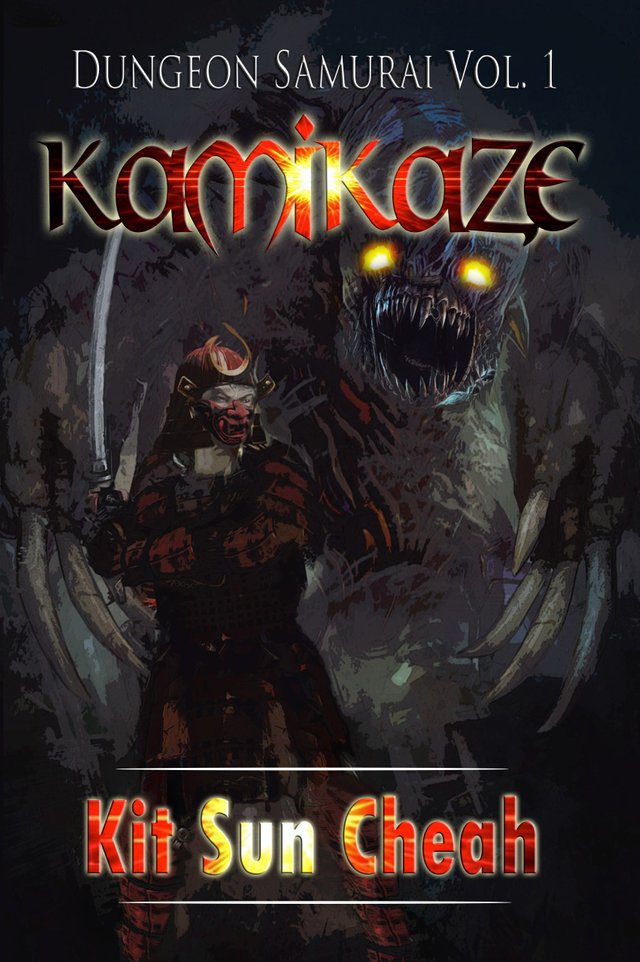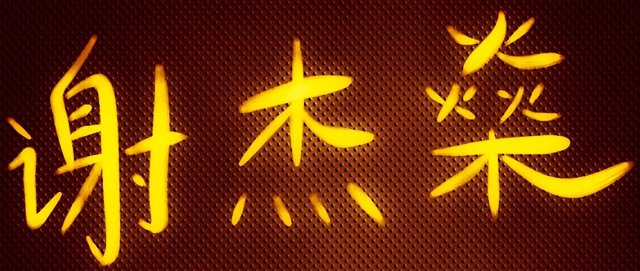Designing for Games vs Designing for Stories

A week ago, PulpRev author Jon Mollison wrote a Twitter thread about the role of clerics in Dungeons and Dragons. Among the key insights was this:
Wrong. Clerics are a great #dnd class because they fill a proper function within the game - secondary brick with defensive tac support.
Designing the class to reflect a literary archetype puts the horse of post-game rationalization before the cart of the in-game game.
He nails it on the head. Designing for games is vastly different from designing for stories.
Readers engage a prose story through the plot, characters, and prose. The writer guides them on a journey in the mind, directing the story from start to finish.
Gamers engage a game through its mechanics. By playing as their avatar, they create their own experience.
Readers and gamers have different ways of approaching their chosen media. The requirements of these media lead to different design choices.
The Clerics of Dungeon Samurai
While my Dungeon Samurai was heavily inspired by OSR Dungeons and Dragons, it is not a litRPG. It is, if anything, an anti-litRPG, in part because I wanted to differentiate it from other isekai dungeon crawlers out there. I deliberately set out to avoid as many litRPG tropes as I could. Instead, when crafting the world of Dungeon Samurai, I laid down four core combat rules.
1. There is no HP
Characters cannot tank damage. They cannot charge headlong into an enemy attack, trusting in their vast HP reserves and high defense stats to win the day. Armor can protect against blows, but strikes to unarmored areas will cause debilitating injuries, degrade the victim's ability to fight, or kill him outright. And then monsters with anti-armor abilities show up.
To honor the classical martial arts represented in DUNGEON SAMURAI, combat must be treated as a life-or-death struggle. Carelessness and recklessness will be severely punished. Such a mindset is fundamentally incompatible with any system that allows a character to simply soak up damage and still keep on fighting without loss of capability. Thus, there cannot be a HP system, defense stats, or any other game artifacts that undermines this portrayal of warfare.
2. There is no room for evasion
The dungeon is cramped. There is no room for fancy dodging footwork. That means no dodge tanks who can draw enemy fire and dance out of the way, no super-agile rogues who can waltz through enemy formations and cut down everything in sight, no rangers who can kite their way to victory.
Instead of maneuver, the human army relies on formation combat and sheer brute force. Marching in heavily armored combined arms squads, when they encounter the enemy they pepper them with crossbow bolts and charge them with spears. If the enemy gets too close, they draw their blades and finish them off in close quarters.
The very nature of the dungeon precludes lone heroes from taking precedence. Anyone who flies solo will be overwhelmed and cut down before going far. Discipline, teamwork and sheer brute force is the order of the day.
Quite unlike a game.
3. There is no MP
The magic system of Dungeon Samurai is fairly simple. Priests--and only priests--may pray for divine intervention. Through prayers, they can heal the wounded, call down fire and lightning, illuminate dark rooms, and perform other such military miracles.
However, there is a hard limit on number of prayers per day.
In this sense, Dungeon Samurai is most like Dungeons and Dragons, whose magic is itself inspired by Jack Vance's Dying Earth series. Resource scarcity and management is a pervasive theme in Dungeon Samurai, with the characters having to juggle time constraints, resources, and the mission. Introducing a hard limit to the number of prayers a cleric can use a day augments the drama of the story, as characters must decide whether to press on with the mission or retreat and save their skins.
4. There are no game rules or mechanics
Dungeon Samurai is not a game. It is not a litRPG. It is a brutal, unforgiving war through a death world hellbent on destroying every human unfortunate to be dragged into the depths of the dungeon. The odds are against the humans.
There are no arbitrary game rules that favour the humans. This is not D&D 5E, where the rules are heavily weighted in the players' favour to keep them alive through countless battles.
Humans possess no inherent advantages over the monsters. They must rely on their wits, martial skill and sheer guts.
There are no safe zones. Not even outside the dungeon. Drop your guard and a monster horde will come for you.
The only way to survive is to adopt a military mindset, and press on to the bitter end.
These core rules influence the design and deployment of the clerics in Dungeon Samurai. In a world where anyone can and will die, the combined arms squad is the most viable formation to brave the deeps. No one is indispensable; while every warrior has a unique skill that optimizes him for a certain position in the squad, everybody can adopt any other role in the squad if necessary, allowing them to fill critical roles when (not if) someone falls.
In this sense, clerics are exactly the same as the other human warriors. They are trained to the same standards and fight in the same formations as their comrades. However, being the only people who can call for divine intervention, they are usually kept in the rear, safely away from monsters. Relatively.
Such a set-up suits the logic of Dungeon Samurai. Anyone can die and is replaceable, but clerics are more valuable than others, and must be protected from harm. Since evasion is impossible and tanking attacks suicidal, the only option left is to place them in the rear ranks.
And even then, monsters enjoy pincer attacks and attacking from the rear.
Nowhere is safe.
In sharp contrast, D&D clerics serve as specialist anti-undead fighters, with a secondary specialisation as tanks and healers. This is perfect for D&D, because it is a game. Players create their own experiences by playing as a character archetype within the rules of the game. For this work, each character class must be distinct from each other. Through class limitations, stats, bonuses and the magic system, the cleric's role is neatly defined within the context of the game, allowing characters the option of enjoying an experience through this specific set of mechanics.
Books and games are two different media, with different ways of experiencing them. The wise designer creates characters, rules and mechanics that suit the medium he is working in, thus fully engaging his customer by giving him what he wants from it.
What About LitRPGs?
With the success of Sword Art Online, LitRPGs have exploded in popularity. At heart, these are works of fiction where game mechanics and rules play a significant role in worldbuilding, such as health points, stats, experience points, leveling up, and so on.
LitRPGs attempt to offer the best of both worlds. Through prose, the reader is guided through a fantastic adventure, created and orchestrated by an unseen writer (or game master). The game mechanics are instantly recognisable to gamers, making it easier for readers to dive into the story world.
How will this affect character design?
I humbly submit that the presence of game mechanics requires characters to be designed according to game logic. That is, specific character classes and builds optimised to make use of their talents and abilities.
Character stats are, at heart, attempts to quantify the abstract to run a game. You can't quantify how well a martial artist can detect and block or evade incoming blows, but you can deduct the defense stat from the raw damage value of an attack to determine how much damage a character takes. You can't quantify how healthy a person is, but in a game you need to know how close a given actor is to death.
Character stats are, frankly, artificial.
If you're going to impose an artificial layer upon the fiction world, you might as well go the whole hog and make full use of the stats by creating different character classes with different stats, abilities and strategies. This makes use of the system you've set up -- and, really, is the only reason to have it.
If you have character stats and other game mechanics in a LitRPG story but design and craft the characters without having them take advantage of the mechanics, then you might as well not have a litRPG story to begin with.
Different Rules for Different Media
Different media have different ways of engaging their audiences. The key to successful character design is to understand the nuances of how your preferred medium draws in your customer and keeps him engaged and entertained. Armed with this knowledge, you can design characters and worlds that fulfills the requirements of your vision, the medium and your audience.

Interested in Dungeon Samurai? Check out Vol. 1: KAMIKAZE here!
To stay updated on latest writing news and updates, sign up here!
Congratulations! Your post has been selected as a daily Steemit truffle! It is listed on rank 5 of all contributions awarded today. You can find the TOP DAILY TRUFFLE PICKS HERE.
I upvoted your contribution because to my mind your post is at least 5 SBD worth and should receive 238 votes. It's now up to the lovely Steemit community to make this come true.
I am
TrufflePig, an Artificial Intelligence Bot that helps minnows and content curators using Machine Learning. If you are curious how I select content, you can find an explanation here!Have a nice day and sincerely yours,

TrufflePig